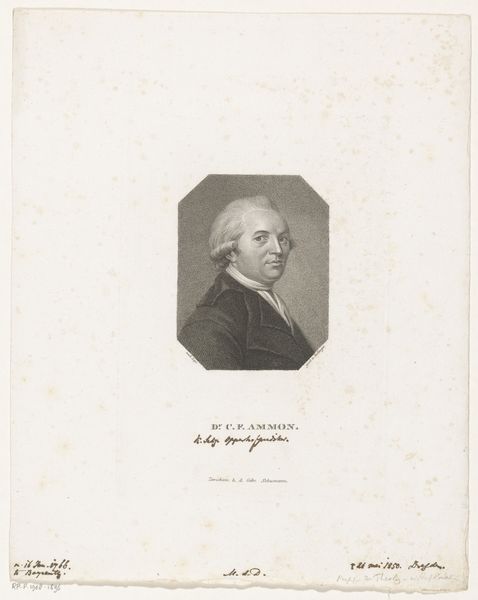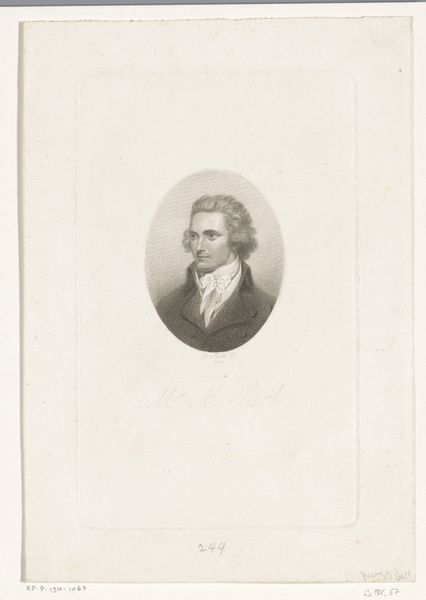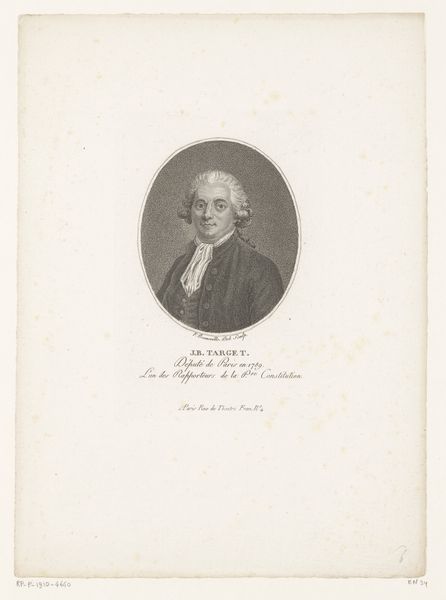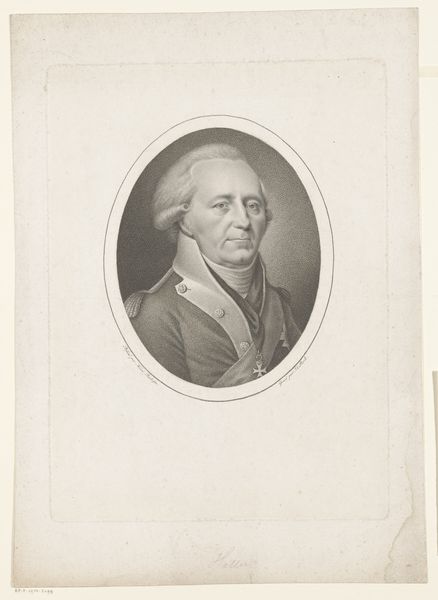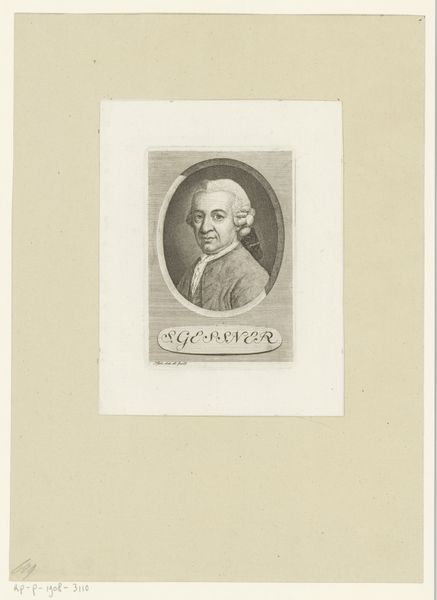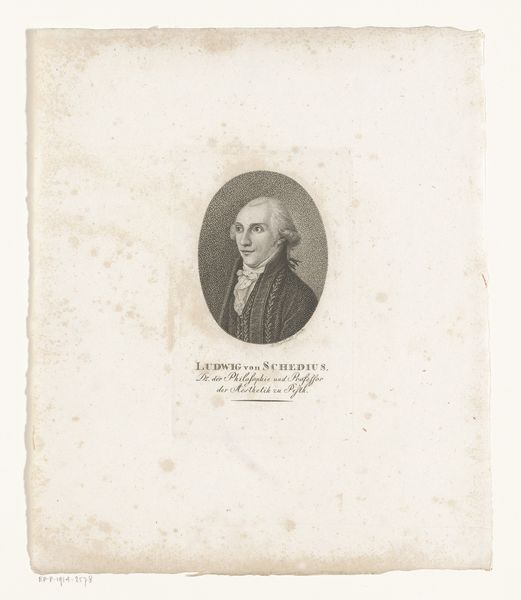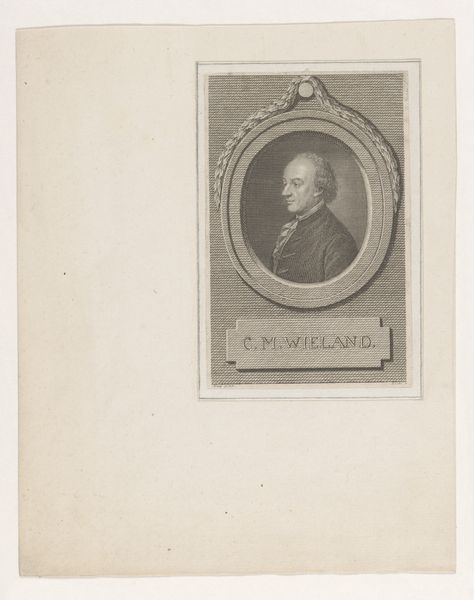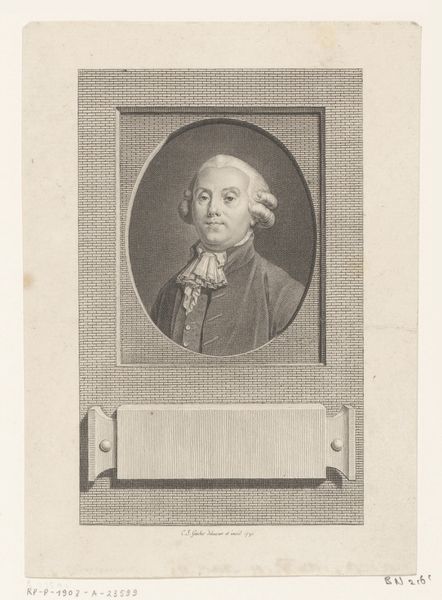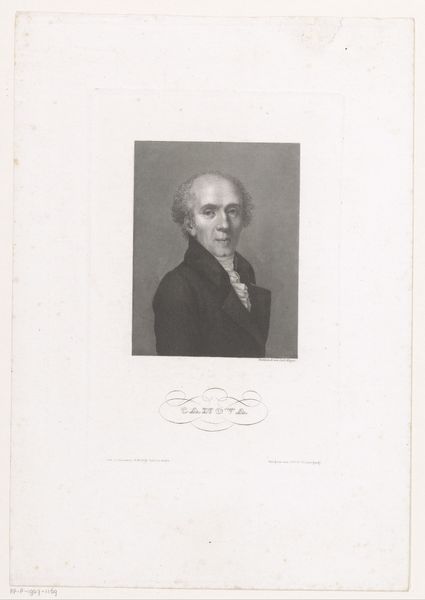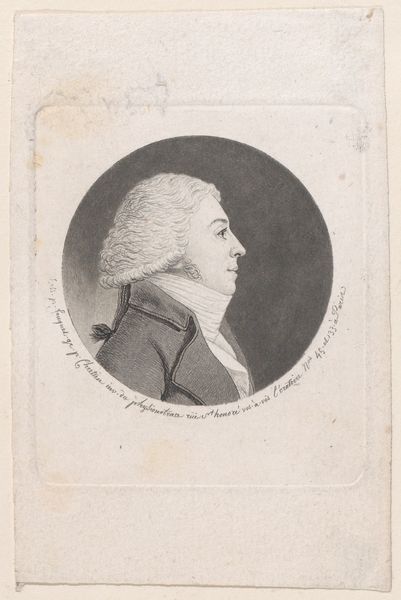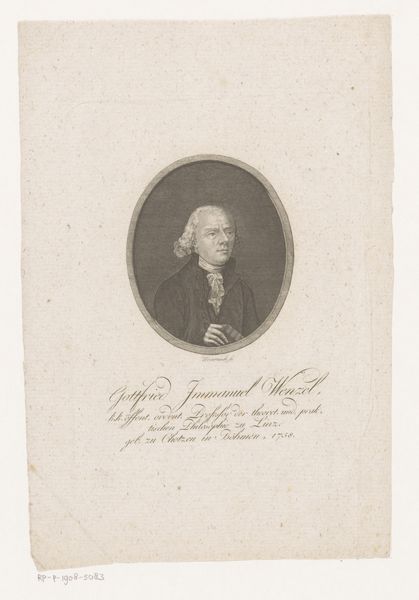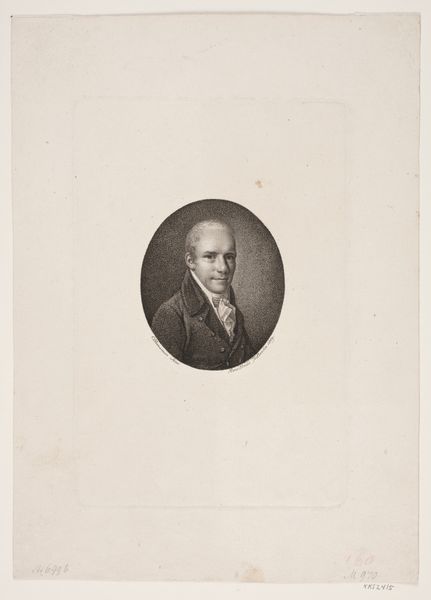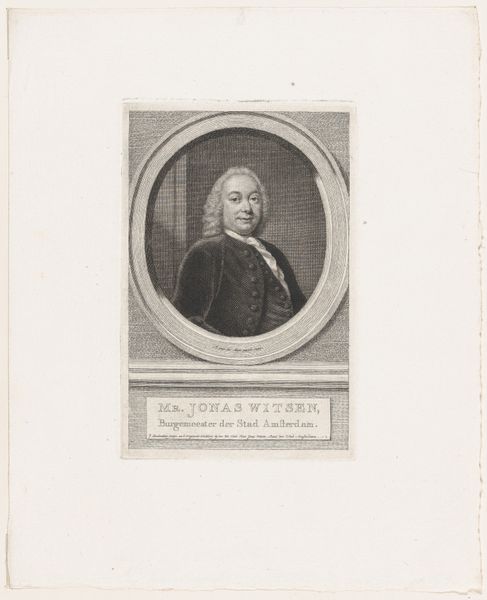
drawing, print, pencil, engraving
#
portrait
#
drawing
#
neoclacissism
# print
#
pencil
#
engraving
Dimensions: height 243 mm, width 152 mm
Copyright: Rijks Museum: Open Domain
Curator: Let's discuss this intriguing portrait, an engraving of Christian Fürchtegott Gellert by Johann Georg Nordheim, created sometime between 1840 and 1855. Editor: My first thought is how reserved and rather severe he appears. The precise lines and monochromatic palette lend a certain formality. I am wondering if this speaks to how portraiture was evolving to convey a new sense of bourgeois authority and distinction? Curator: That's a astute reading. Gellert was an influential figure, a philosopher and poet. Looking closer, notice how Nordheim uses light and shadow to construct a sense of character, almost an air of academic seriousness in Gellert’s eyes and firm mouth. This composition subtly asserts his intellectual stature, which reflects the growing importance of intellectual figures in the public sphere at this time. Editor: Yes, it's the framing as well, isn't it? That decorative border that contains his image gives the subject added…importance? Perhaps even a level of institutional acceptance? How would that influence Gellert's reception as a cultural icon, for instance? Curator: Precisely! Consider this work within the context of Neoclassicism. The focus on clarity and idealized form, evident in the meticulous lines and balanced composition, ties into the Enlightenment's emphasis on reason and order. Portraiture served not just to capture likeness, but to project ideals and legitimize the sitter’s status. The framing, along with the clear inscription, presents him as a figure of established significance, solidifying his legacy for future generations. But can we reconcile that air of intellectual superiority with a broader view of social equality? Was he an advocate for wider education, or was his influence contained within elite circles? Editor: A crucial question, especially regarding the availability and affordability of prints. Who exactly could access this image, and what did it signify for them? Was it a celebration of Enlightenment values or the affirmation of a hierarchical system where intellectualism was an exclusive privilege? Curator: Reflecting on the social and historical threads interwoven into this image challenges our understanding. The portrait is more than a simple representation, isn't it? It embodies the complex interplay between personal identity and social context during a transformative era. Editor: It encourages us to rethink how portraits mediate and cement authority, not just of the sitter, but of the very structures they inhabit. Thank you, Gellert, for prompting a debate that still has social impact.
Comments
No comments
Be the first to comment and join the conversation on the ultimate creative platform.
